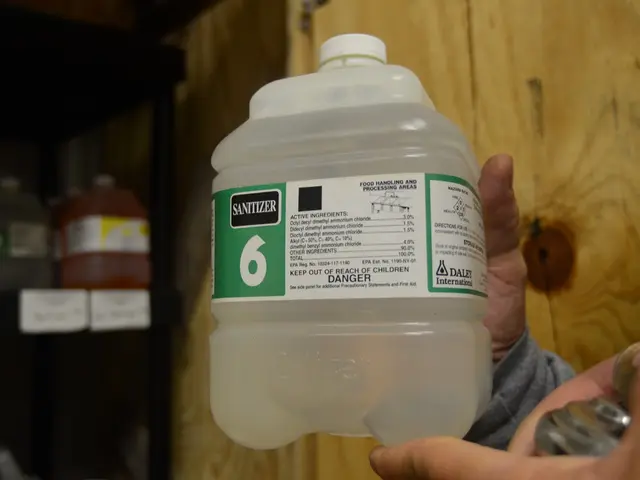HIV Negative Result: Interpreting the Implications
HIV, the virus that causes AIDS, cannot be transmitted through air, water, mosquitoes, physical contact, drinking fountains, or sharing dishes. The virus can only be transmitted through bodily fluids like blood, semen, vaginal fluid, anal fluid, and breast milk, requiring direct access between the bloodstreams of two individuals.
There are two main tests for HIV: antigen/antibody tests and antibody tests. Antigen/antibody tests, which can detect HIV antigens or antibodies in about half of the people who have acquired HIV after 18 days following exposure and in 99% of people by 44 days after exposure, offer improved early detection compared to antibody-only tests. Antibody tests, which are simpler and can detect antibodies that the body produces in response to HIV, are commonly used and can be taken at a doctor's office or in the comfort of one's own home using a home HIV test.
It's important to note that a nonreactive result does not necessarily mean a person does not have HIV. In some cases, the test may have been taken too early to detect HIV antigens or antibodies. The average window period for a nonreactive HIV test result depends on the type of test but generally ranges from about 10 days to 90 days after potential exposure.
Regarding accuracy during the window period, HIV tests are less reliable before the window period ends because the body may not have produced enough antibodies or detectable viral particles yet. Fourth-generation tests, which detect both antigen and antibody, offer improved early detection and higher reliability by around 45-62 days post-exposure but still may not be 100% conclusive before this time.
Medical guidelines often recommend repeat testing after the window period to confirm a nonreactive result. For example, a nonreactive fourth-generation test at 62 days post-exposure is considered highly reliable though not absolutely conclusive. Many clinics recommend initial testing no earlier than 10 days post-exposure (for RNA tests) but routine conclusive testing at about 45 days using fourth-generation tests.
Early treatment of HIV depends on early detection, which highlights the importance of regular HIV testing, especially for individuals who engage in high-risk behavior. Without treatment, HIV can be a serious condition, but people can manage the condition with medication, and when individuals begin HIV treatment early, they are far more likely to live a full and active life with a significantly reduced risk of developing AIDS.
People can lower the risk of contracting HIV by using condoms and other barrier methods, limiting their number of sexual partners, using sterile needles if injecting drugs, taking pre-exposure medication if they have a higher risk of infection, taking HIV medication to prevent transmission to fetuses, and taking post-exposure medicines if necessary.
The Centers for Disease Control and Prevention recommends that people between the ages of 13 and 64 years receive testing for HIV at least once. Some groups of individuals should have an HIV test more often, such as those who have been sexually active with multiple partners or those who have shared needles or syringes.
[1] AIDSinfo. (n.d.). HIV Testing. Retrieved from https://aidsinfo.nih.gov/understanding-hiv-aids/fact-sheets/14/56/hiv-testing [2] Centers for Disease Control and Prevention. (2018). HIV Testing Algorithm for Adults, Adolescents, and Pregnant Women in Health-Care Settings. Retrieved from https://www.cdc.gov/hiv/pdf/risk/cdc-hiv-testing-algorithm-2018.pdf [3] HIV.gov. (2018). Clinical Guidelines for the Use of Antiretroviral Agents in Adults and Adolescents Living with HIV. Retrieved from https://www.aidsinfo.nih.gov/guidelines/html-1/adult-and-adolescent-arv-guidelines/0/ [4] National Institutes of Health. (2017). HIV Testing. Retrieved from https://www.niaid.nih.gov/diseases-conditions/hiv-testing [5] World Health Organization. (2016). Guidelines on When to Test for HIV Infection and Prevention of Mother-to-Child Transmission. Retrieved from https://www.who.int/hiv/pub/2016/guidelines-testing-2016/en/
[1] Early detection of HIV is crucial for effective treatment, as the virus can be managed with medication, and individuals who start treatment early have a significantly reduced risk of developing AIDS. [2] The science behind HIV testing has advanced, with fourth-generation tests offering improved early detection of the virus by detecting both antigens and antibodies. [3] In addition to regular testing, individuals can lower their risk of contracting HIV by engaging in safe sexual practices, such as using condoms and limiting the number of sexual partners, or taking pre-exposure medication if they have a higher risk of infection. [4] These measures are essential for mental health, as living with HIV can be emotionally challenging, but with proper medical care and support, individuals can live full and active lives. [5] It is important to follow medical guidelines, such as those provided by the Centers for Disease Control and Prevention, for frequent HIV testing, especially for those at higher risk, to ensure early detection and proper management of the virus.








